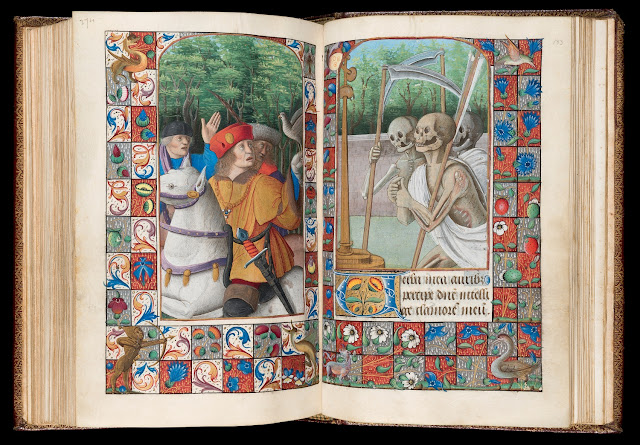Dazzling treasures combining gold and precious pigments - some of the finest illuminated manuscripts in the world - will go on display on Saturday 30 July in celebration of the Fitzwilliam Museum’s bicentenary.

Spanning the 8th to the 17th centuries, the 150 manuscripts and fragments in COLOUR: The Art and Science of Illuminated Manuscripts guide us on a journey through time, stopping at leading artistic centres of medieval and Renaissance Europe. Exhibits highlight the incredible diversity of the Fitzwilliam’s collection: including local treasures, such as the Macclesfield Psalter made in East Anglia c.1330-1340, a leaf with a self-portrait made by the Oxford illuminator William de Brailes c.1230-1250, and a medieval encyclopaedia made in Paris c.1414 for the Duke of Savoy.

“Leading artists of the Middle Ages and early Renaissance did not think of art and science as opposing disciplines,” says curator, Dr Stella Panayotova, Keeper of Manuscripts and Printed Books. “Instead, drawing on diverse sources of knowledge, they conducted experiments with materials and techniques to create beautiful works that still fascinate us today.”

“This has been an exciting project,” says research scientist, Dr Paola Ricciardi. “By combining imaging and spectroscopic analysis — methods more commonly associated with remote sensing and analytical chemistry — and by exploring such a diverse range of manuscripts, we can begin to understand how illuminators actually worked.”

Other discoveries include pigments rarely associated with manuscript illumination – such as the first ever example of smalt detected in a Venetian manuscript. Smalt, obtained by grinding blue glass, was found in a Venetian illumination book made c.1420. Evidently, the artist who painted it had close links with the famed glassmakers of Murano. This example predates by half a century the documented use of smalt in Venetian easel paintings.

Adam and Eve were originally shown naked in an ABC commissioned c.1505 by the French Queen, Anne of Brittany (1476-1514) for her five-year-old daughter. However, a later owner, offended by the nudity, gave Eve a veil and Adam a skirt. Infrared imaging techniques and mathematical modelling have made it possible to reconstruct the original composition without harming the manuscript.

Visitors will be encouraged to make their own discoveries in the exhibition galleries and online through a new, free digital resource: ILLUMINATED: Manuscripts in the Making. With hundreds of high resolution digital images and infrared photographs, this interactive, cross-disciplinary resource offers users in-depth information on the manuscripts’ contents, patrons, cultural and historical contexts, as well as scientific data relating to artists’ techniques and materials.

c.1330-1340 [Credit: © The Fitzwilliam Museum, Cambridge]
“We are delighted to be presenting this exhibition in our bicentenary year,” says director, Tim Knox. “Ten years ago The Cambridge Illuminations was the Museum’s first ever record breaking exhibition, attracting over 80,000 visitors. People were enchanted by the remarkable beauty and delicacy of the manuscripts. I am convinced that our bicentenary visitors will again be equally inspired by the superb illuminations collected and treasured at the Fitzwilliam for 200 years, and will value this rare opportunity to find out how they were made and how we are preserving them for the future.”
COLOUR: The Art and Science of Illuminated Manuscripts will run during the second half of the Fitzwilliam’s bicentenary year, from 30 July to 30 December 2016. Admission is free.
Source: The Fitzwilliam Museum [August 01, 2016]